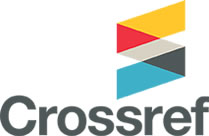USE OF GIS URBAN PLANNING SCIENCE
Abstract
Author(s): Sadaf Kheirodin
The development of the city will bring new opportunities for urban GIS. Urban and regional planners use Esri technology to envision a better future for communities. Take a geospatial approach to crea te safe, vibrant places where people can live, work, learn, and play. Planners, developers, landscape architects, and urban designers can use Esri maps and spatial analytics to make the case for change, streamline the development process, and engage citizens. GIS has expanded from a niche technology used by specialists to an integrated information technology used throughout an organization. While the demand for staff who specialize in GIS persists, numerous planning and economic development, community development, and public works professionals are embracing GIS as a basic tool for conducting their daily business. ESRI supports both approaches with an array of tools for GIS professionals performing georeferenced tasks and those who use GIS in many disciplines to improve efficiency and productivity and centralize information. Many planning departments that have acquired mapping systems in the past have since shifted to GIS in lieu of mapping software (French and Wiggins 1990). With the increase in user friendliness and the number of functions of GIS software, and the marked decrease in the prices of GIS hardware, GIS is now an operational and affordable information system for planning. It is increasingly becoming an important component in the planning support system. Recent advances in the integration of GIS with planning models, visualization, and the Internet will make GIS more useful to urban planning. Today, the main constraints on the use of GIS in urban planning are not technical issues, but the availability of data, organizational change, and staffing.










